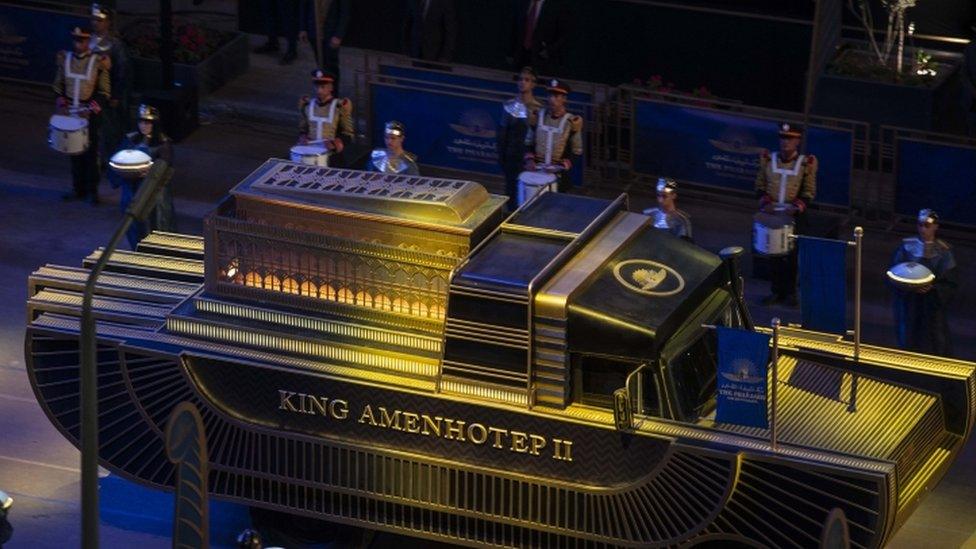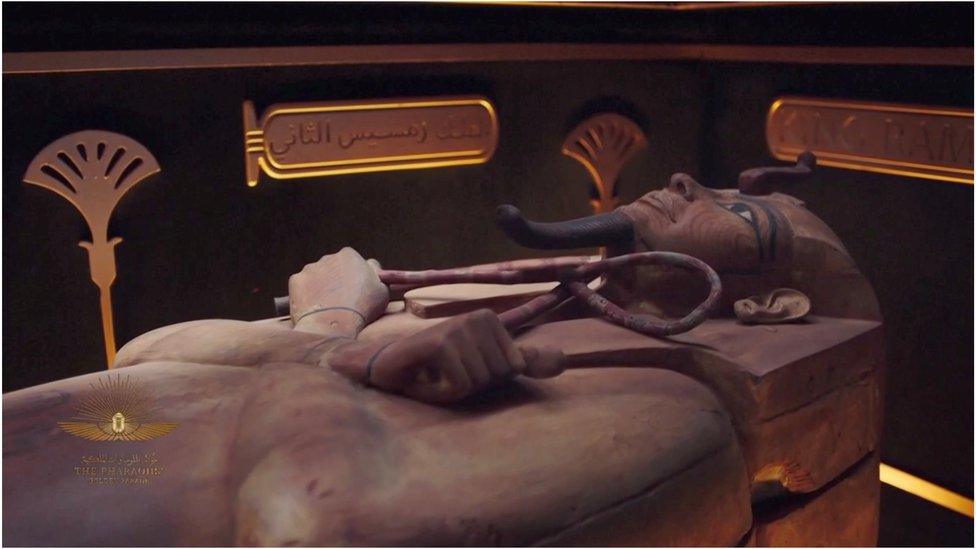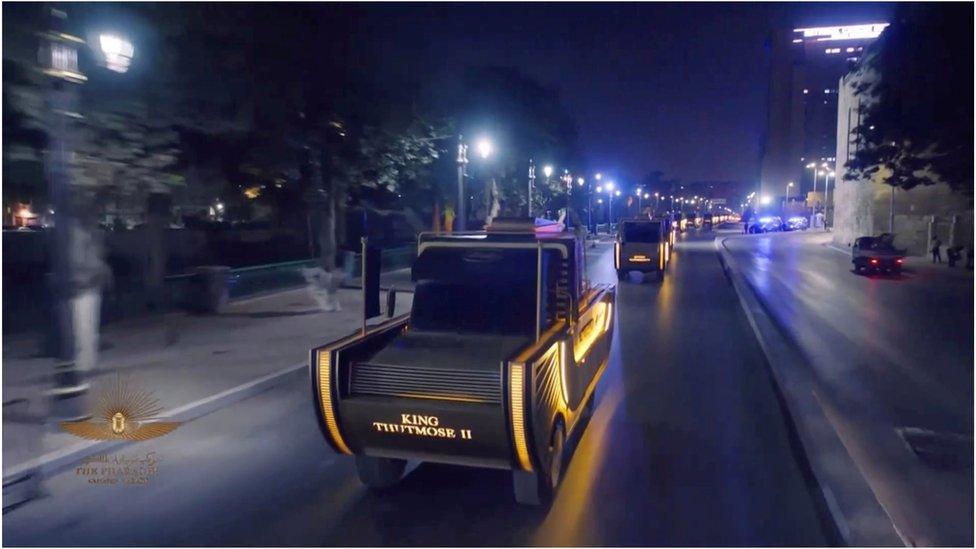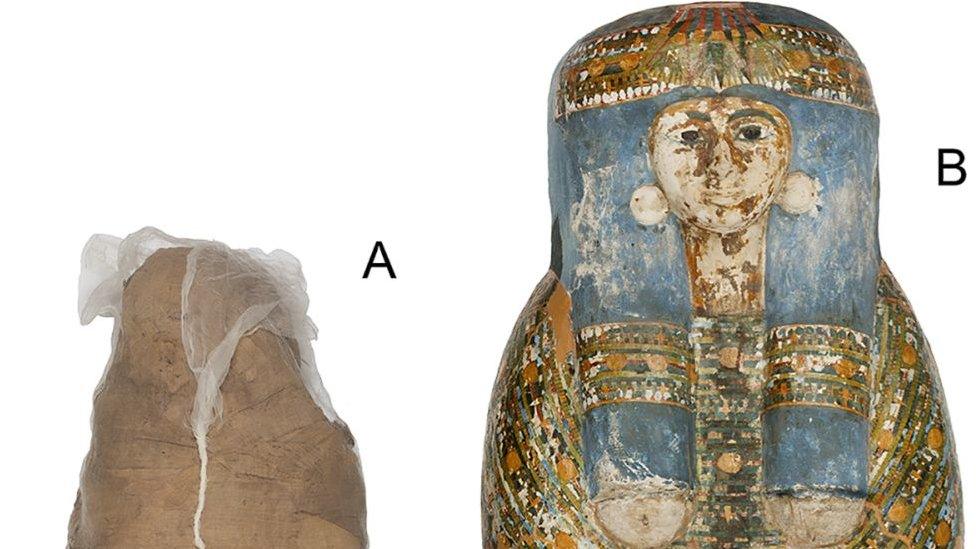Ancient mummies paraded through Egypt
- Published

Egypt's mummies have historically been associated with superstition and bad luck. Recently, Egypt has had a number of disasters including the Suez Canal being blocked by the MS Ever Given cargo ship for almost a week. Social media users have questioned whether the myth of "the curse of the pharaohs" might be to blame.

The mummies were transported from the Egyptian Museum on Cairo's Tahrir Square to their new home at the National Museum of Egyptian Civilisation in what is called The Pharaohs' Golden Parade. Egypt's government is hoping that the new museum, which opens fully this month, will help encourage people to holiday in the country.

The mummies were transported in order of their reigns - from the 17th Dynasty ruler, Seqenenre Taa II, to Ramses IX, who reigned in the 12th Century BC. The mummy of King Ramses II (pictured) was among those to be transported. He is widely seen as the most famous pharaoh of the New Kingdom, who ruled for 67 years and is remembered for signing the first known peace treaty.

Each mummy was carried on a decorated vehicle fitted with special shock-absorbers and surrounded by a motorcade, including replica horse-drawn war chariots. For the move they had to be placed in special nitrogen-filled boxes to help protect them against external conditions. Some of Cairo's streets were resurfaced to ensure the mummies had a smooth journey.
- Published7 February 2021

- Published22 October 2019
